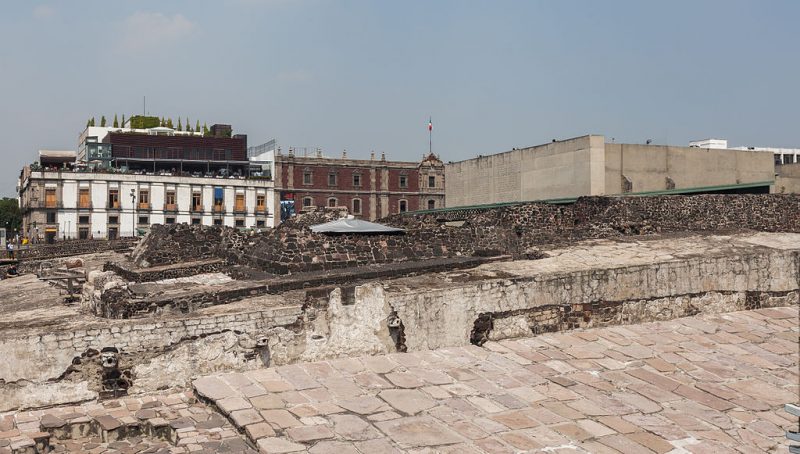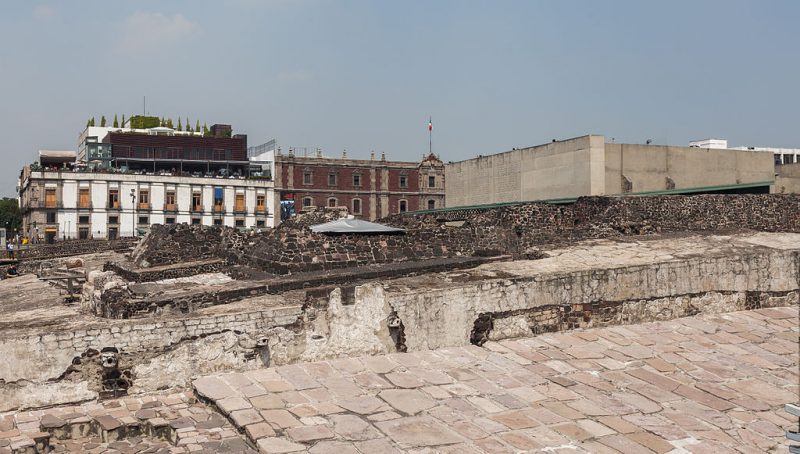The ancient Aztec people were known for human sacrifices to their gods, and it’s been a goal of archaeologists to uncover sacrificial sites. But another goal has been to discover the site where researchers believe Aztec leaders were cremated during the period of 1325 to 1521.
Scientists believe they may have found such a site during an excavation in Mexico City. They have found a tunnel-like passage which leads into two sealed chambers. Along those tunnels are skulls of children. There are also hand and foot bones near knives that are known to have been used specifically for sacrifices. Archaeologists say that the children were between the ages of five and seven. The heads included the first three vertebrae, which would suggest that they were most likely decapitated.
Historians believe that in the Aztec culture, a blood sacrifice had to have been made to pay back a blood-debt. While most of the time it was animals that were sacrificed, sometimes the Aztecs also sacrificed humans – first cutting out the heart of the victim and then throwing them down the temple stairs.
The Mexico City passage was found in the Templo Mayor ruin. This find could be the break that archaeologists have been waiting for. It appears that their cremation theories may have been close to the mark, as passages and tunnels led to a circular platform where the cremation might have taken place. When the tunnel was first found in 2013 it was covered by a three-ton rock. The passage could be significant since there was a hollow box found there with offerings in it. When opened, the box was found to contain gold pieces and bones from eagles, as well as parts of infant bones.
The passageway was seen by Spanish explorers in 1521 during the Conquest, and they left documents suggesting it was a place where the leaders’ remains were burned. The Templo Mayor was one of the most significant places in the Aztec capital, Tenochtitlan, so it’s reasonable that this might be where the cremations took place.

Archaeologists started using radar for detecting underground features, beginning at a promising site that contained a carved Aztec god. Throughout the years, they have been searching endlessly for the passageway, however the popularity of other searches has brought much attention and concentrated exploration into other areas. Any artifacts found during any excavation brings great pride to the Mexican cities. In fact, the country is still searching for a special feather headdress and is hoping that one day archaeologists will come across it.
The archaeologists have to wait until 2016 to excavate the tunnels, but are anticipating something significant if the two chambers connect and they find remains or ashes that finally prove their cremation theory. The lead archaeologist on the dig hopes that one of the remains will be of Moctezuma I, whom was the second emperor and ruled from 1440 to 1469. During that time, he was confronted by and succumbed to Hernan Cortes.
Historians admit that the archaeologists over the years will continue to have a particularly difficult time in this area until they learn more about what they are looking for. Previous digs have only intensified the theory of a significant cremation site, but until more is known there’s no guarantee that they are searching in the right areas.

